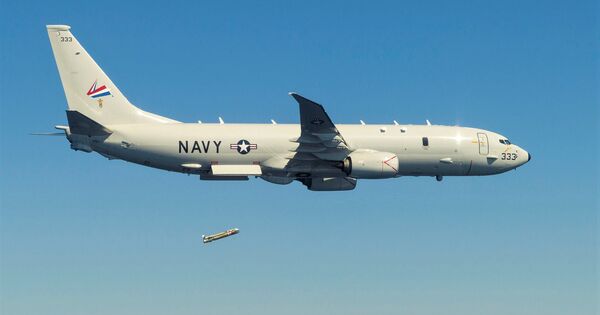
A High Altitude Anti-Submarine Warfare Weapon Capability-configured Mk 54 lightweight torpedo is dropped from a US Navy P-8A Poseidon MPA during testing. The wing kit adaptor is visible atop the torpedo body. The Mk 54 torpedo is used by many countries in the APAC region. (NAVAIR)
The Asia-Pacific (APAC) region is one of the most important maritime regions in the world, with several countries possessing extensive coastlines, strategic naval bases, and busy sea lanes. Increasing regional security challenges, including territorial disputes and geopolitical shifts, make it imperative for these countries to develop and strengthen their anti-submarine warfare (ASW) capabilities.
ASW capabilities typically include weapons and sensors, the training and education of military personnel, and the deployment of specialised platforms. Some key ASW technologies include sonars, torpedoes, depth charges, and acoustic sensors. This article focuses on the latest airborne anti-submarine weapons in the region, which include systems operated by China, India, Japan, South Korea, and Taiwan.
Several APAC countries including China, Japan, and South Korea have developed and inducted specialised ASW vessels – such as frigates, destroyers, and patrol boats – equipped with advanced sensors and weapons. These platforms can operate alone or as part of a larger naval task force, providing a multilayered defence against submarine threats.
In addition to dedicated ASW vessels, APAC countries are investing in multirole platforms that can perform various missions, including ASW. For instance, China's Z-20F naval ASW-capable helicopter and India's P-8I Poseidon maritime patrol aircraft (MPA) are equipped with advanced sensors and weapons, allowing them to detect and track submarines from the air.
Looking to read the full article?
Gain unlimited access to Janes news and more...







